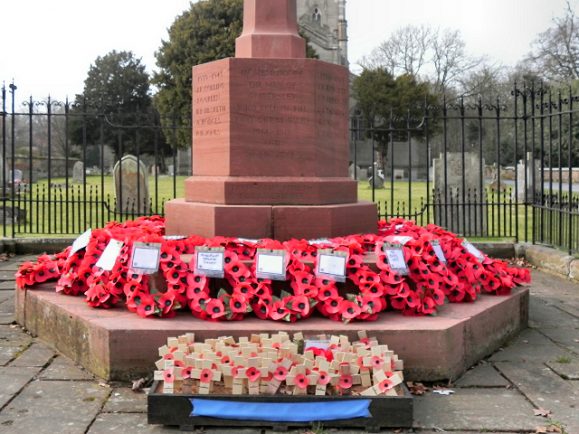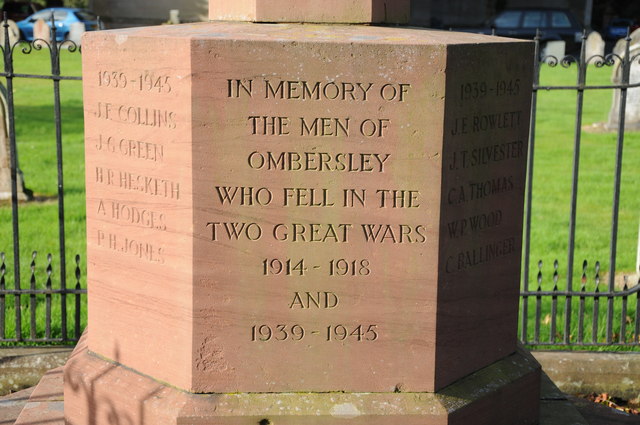TWELVE War memorials built in the last century, including one in Ombersley, have now been listed by the Department for Digital, Culture, Media and Sport on the advice of Historic England.
The memorial in the churchyard at St Andrews Church, constructed in 1946 to commemorate those who died in the First and Second World War, has been given Grade II status.
The stone cross with good inscriptions has been listed because it is of historic interest and is ‘an eloquent witness to the tragic impact of World events and the sacrifice made by local servicemen.
It is constructed of sandstone, standing in a small paved area adjacent to the churchyard.
It consists of a tall stone cross on a large octagonal plinth, which stands on a two-stepped base.
The inscriptions read: “In memory of the men of Ombersley who fell in the two Great Wars, 1914 – 1918, and 1939 – 1945. Their name liveth for evermore.”
It also features the names of those who died in each conflict.
Although the majority of First World War memorials were not constructed until after the end of the war, memorials began to be created prior to this to provide the community with a focus for their grief.
Some were made by individuals to commemorate family members, others by local communities to honour the sacrifices being made or to specific events and places related to the war effort.
First World War Minister Lord Ashton of Hyde said: “As we enter the final year of our First World War centenary commemorations, we want to ensure the bravery and sacrifice of those who served are never forgotten.
“Local war memorials are a poignant reminder of how the war affected our communities and of those who never came home.
“I encourage everyone to visit their local memorial and to learn more about their connection to this pivotal point in our history.”
Duncan Wilson, Chief Executive of Historic England, said: “These memorials were an important indicator of how society was feeling and reacting as the war progressed and as the loss of life increased to unprecedented levels.
“They were not just a focal point for people’s grief but also seen as a symbol to those still fighting.”
Newspaper reports suggested there was a desire to create war shrines from 1916 but the move was controversial as some saw them as anti-patriotic and disrespectful to those fighting.
Ultimately these war memorials and shrines became a precursor what was to come – the national movement to memorialise that took place following the war.













